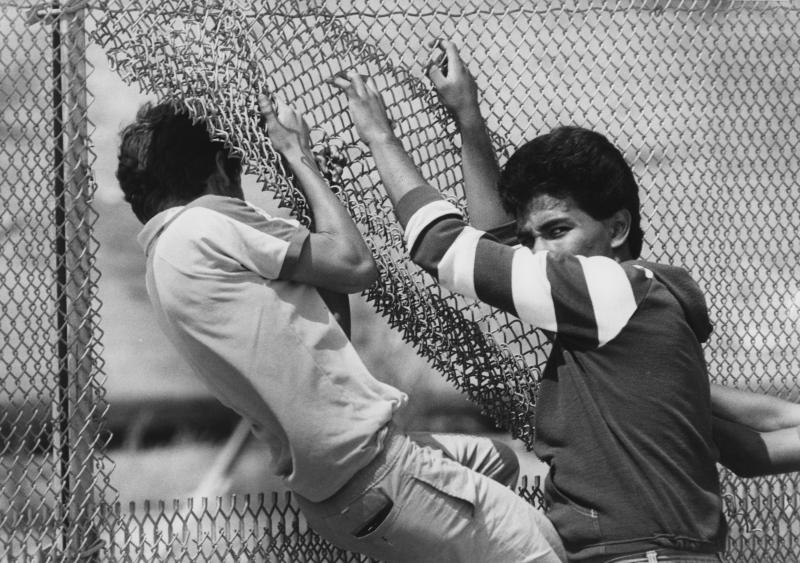 At the End HumanTrafficking event in Luxor, several people attempted to shut me up by claiming that, in their trafficking discussions, they are only talking about the worst, the authentic trafficking cases – not the smuggled migrants and not the voluntary sex workers. It would be nice if that were true, it would be great if anti-prostitution and anti-migration campaigners did not mix everyone up and muddle categories so readily – but they do. That is the point: that is why there is dissent, disagreement and resistance, because those who believe themselves to be in charge of this freedom-seeking social movement do over-generalise all the time so that simplistic labels obliterate the preferences of many people and, often, hide a project to abolish commercial sex. Note how, in this story, one term is substituted for another as though they were all synonyms. The UN Convention on Transnational Organised Crime of 2002 has separate protocols for smuggling and trafficking. I have never been a fan of the distinction these protocols try to make, but it is disappointing that an organisation interested in the issues pays no attention to the distinction and muddles categories up completely. One of the results is that the word trafficking gets used to refer to all sorts of undocumented migration, jobs in the underground economy, jobs held by people under 18, all sex jobs and so on. Everything considered bad becomes ‘trafficking’. Smuggling of migrants is usually construed as aiding undocumented people to cross borders – which does not make them victims according to the law. This is a mess.
At the End HumanTrafficking event in Luxor, several people attempted to shut me up by claiming that, in their trafficking discussions, they are only talking about the worst, the authentic trafficking cases – not the smuggled migrants and not the voluntary sex workers. It would be nice if that were true, it would be great if anti-prostitution and anti-migration campaigners did not mix everyone up and muddle categories so readily – but they do. That is the point: that is why there is dissent, disagreement and resistance, because those who believe themselves to be in charge of this freedom-seeking social movement do over-generalise all the time so that simplistic labels obliterate the preferences of many people and, often, hide a project to abolish commercial sex. Note how, in this story, one term is substituted for another as though they were all synonyms. The UN Convention on Transnational Organised Crime of 2002 has separate protocols for smuggling and trafficking. I have never been a fan of the distinction these protocols try to make, but it is disappointing that an organisation interested in the issues pays no attention to the distinction and muddles categories up completely. One of the results is that the word trafficking gets used to refer to all sorts of undocumented migration, jobs in the underground economy, jobs held by people under 18, all sex jobs and so on. Everything considered bad becomes ‘trafficking’. Smuggling of migrants is usually construed as aiding undocumented people to cross borders – which does not make them victims according to the law. This is a mess.
Best business in Mexico: Human trafficking to US
1 January 2011, New World Human Security Observatory
Mexico City: Organised crime in Mexico has diversified its methods for smuggling people into the United States, a lucrative business that is growing, along with the number of victims.
Both national and foreign emigrants pay up to $7,000 to reach US territory, through the same underground tunnels the cartels for drug trafficking, La Jornada newspaper commented. The traders also transport immigrants in speedboats that take them to Imperial Beach during the night. Once there, US citizens smuggle them into the country, charging up to $8,000 per person.
The modern detection mechanisms used by US authorities along the border wall in the Tijuana-Otay area have forced human traffickers to deviate the course to other border areas.The new method of setting up transit camps to offer shelter to the people waiting to cross the border has become a very lucrative business, with profits amounting to $3,000 per person, the paper reported on Friday.
According to UN statistics, 200 million people emigrated from their country of origin this decade, almost tripling the movement of immigrants reported in the 1960s. Of that figure, nearly 10% of emigrants use Mexico as a transit point.
–Laura Agustín, the Naked Anthropologist

Pingback: Tweets that mention Mixing Terms | Smuggling | Migration | Trafficking | Muddle | Laura Agustín - the Naked Anthropologist on Migration, Trafficking and Sex -- Topsy.com